 全部商品分类
全部商品分类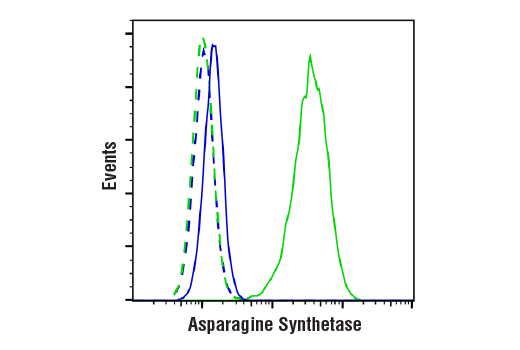


Monoclonal antibody is produced by immunizing animals with a synthetic peptide corresponding to residues surrounding Lys467 of human asparagine synthetase protein.


Product Usage Information
This product is the carrier free version of product #92479. All data were generated using the same antibody clone in the standard formulation which contains BSA and glycerol.
This formulation is ideal for use with technologies requiring specialized or custom antibody labeling, including fluorophores, metals, lanthanides, and oligonucleotides. It is not recommended for ChIP, ChIP-seq, CUT&RUN or CUT&Tag assays. If you require a carrier free formulation for chromatin profiling, please contact us. Optimal dilutions/concentrations should be determined by the end user.
BSA and Azide Free antibodies are quality control tested by size exclusion chromatography (SEC) to determine antibody integrity.



Specificity/Sensitivity
Species Reactivity:
Human, Mouse, Rat




Store at -20°C. This product will freeze at -20°C so it is recommended to aliquot into single-use vials to avoid multiple freeze/thaw cycles. A slight precipitate may be present and can be dissolved by gently vortexing. This will not interfere with antibody performance.


参考图片
Flow cytometric analysis of Loucy cells (blue) and K-562 cells (green) using Asparagine Synthetase (E6C2C) XP® Rabbit mAb (solid lines) or a concentration-matched Rabbit (DA1E) mAb IgG XP® Isotype Control #3900 (dashed lines). Anti-rabbit IgG (H+L), F(ab')2 Fragment (Alexa Fluor® 488 Conjugate) #4412 was used as a secondary antibody. Data were generated using the standard formulation of this product.
Western blot analysis of extracts from K-562 and Loucy cells using Asparagine Synthetase (E6C2C) XP® Rabbit mAb (upper) and GAPDH (D16H11) XP® Rabbit mAb #5174 (lower). The absence of detectable asparagine synthetase in Loucy cells is consistent with published data (5), confirming the specificity of the antibody for asparagine synthetase. Data were generated using the standard formulation of this product.
Western blot analysis of extracts from HCT 116, TALL-1, and JHH-5 cells using Asparagine Synthetase (E6C2C) XP® Rabbit mAb (upper) and GAPDH (D16H11) XP® Rabbit mAb #5174 (lower). The absence of detectable asparagine synthetase in TALL-1 and JHH-5 cells is consistent with published data (5) and publicly available RNAseq data, respectively, confirming the specificity of the antibody for asparagine synthetase. Data were generated using the standard formulation of this product.
Immunohistochemical analysis of paraffin-embedded human oropharyngeal squamous cell carcinoma using Asparagine Synthetase (E6C2C) XP® Rabbit mAb performed on the Leica BOND RX. Data were generated using the standard formulation of this product.
Immunohistochemical analysis of paraffin-embedded human colon adenocarcinoma using Asparagine Synthetase (E6C2C) XP® Rabbit mAb performed on the Leica BOND RX. Data were generated using the standard formulation of this product.
Immunohistochemical analysis of paraffin-embedded human squamous cell lung carcinoma using Asparagine Synthetase (E6C2C) XP® Rabbit mAb performed on the Leica BOND RX. Data were generated using the standard formulation of this product.
Immunohistochemical analysis of paraffin-embedded human non-small cell lung carcinoma using Asparagine Synthetase (E6C2C) XP® Rabbit mAb. Data were generated using the standard formulation of this product.
Immunohistochemical analysis of paraffin-embedded human B-cell non-Hodgkin's lymphoma using Asparagine Synthetase (E6C2C) XP® Rabbit mAb. Data were generated using the standard formulation of this product.
Immunohistochemical analysis of paraffin-embedded human colon adenocarcinoma using Asparagine Synthetase (E6C2C) XP® Rabbit mAb. Data were generated using the standard formulation of this product.
Immunohistochemical analysis of paraffin-embedded JHH-5 xenograft using Asparagine Synthetase (E6C2C) XP® Rabbit mAb. Note the presence of signal in the mouse immune cells and lack of signal in the ASNS negative JHH-5 cells. Data were generated using the standard formulation of this product.
Immunohistochemical analysis of paraffin-embedded mouse pancreas using Asparagine Synthetase (E6C2C) XP® Rabbit mAb. Data were generated using the standard formulation of this product.
Immunohistochemical analysis of paraffin-embedded mouse spleen using Asparagine Synthetase (E6C2C) XP® Rabbit mAb. Data were generated using the standard formulation of this product.
Immunohistochemical analysis of paraffin-embedded human non-small cell lung carcinoma using Asparagine Synthetase (E6C2C) XP® Rabbit mAb (left) or Asparagine Synthetase Rabbit mAb (right). These two antibodies detect independent, unique epitopes on human asparagine synthetase. The similar staining patterns obtained with both antibodies help to confirm the specificity of the staining. Data were generated using the standard formulation of this product.
Immunohistochemical analysis of paraffin-embedded human pancreas using Asparagine Synthetase (E6C2C) XP® Rabbit mAb (left) compared to concentration-matched Rabbit (DA1E) mAb IgG XP® Isotype Control #3900 (right). Data were generated using the standard formulation of this product.
Immunohistochemical analysis of paraffin-embedded HCT 116 cell pellet (left, positive) or TALL-1 cell pellet (right, negative) using Asparagine Synthetase (E6C2C) XP® Rabbit mAb. Data were generated using the standard formulation of this product.



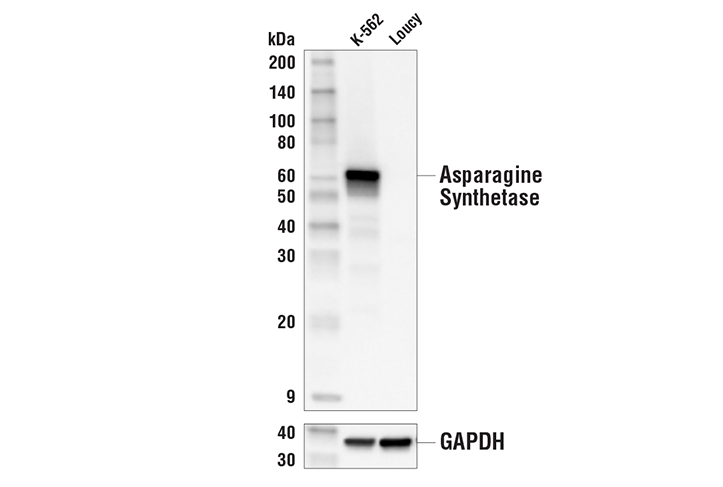
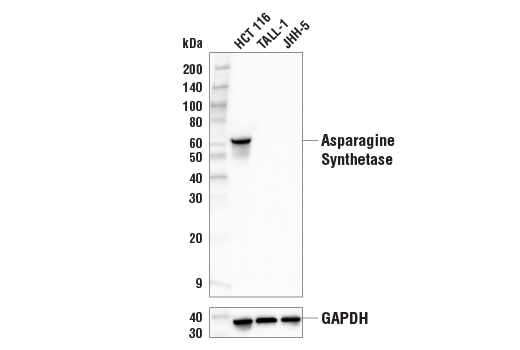

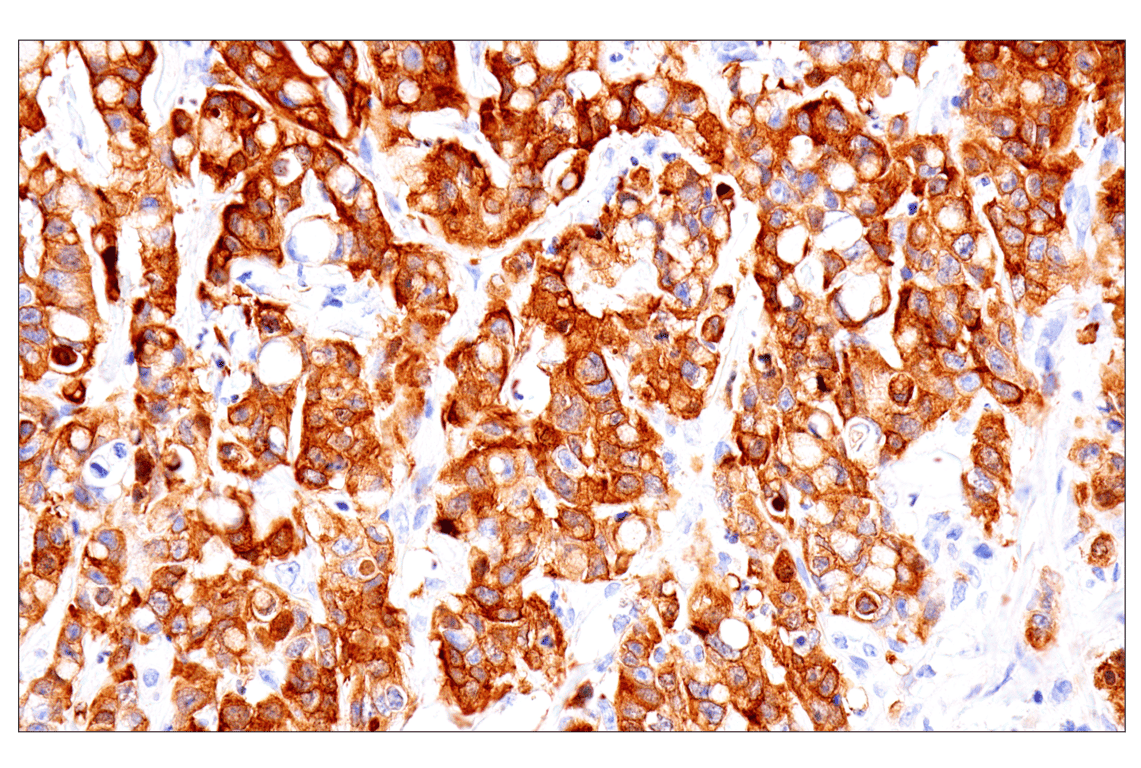
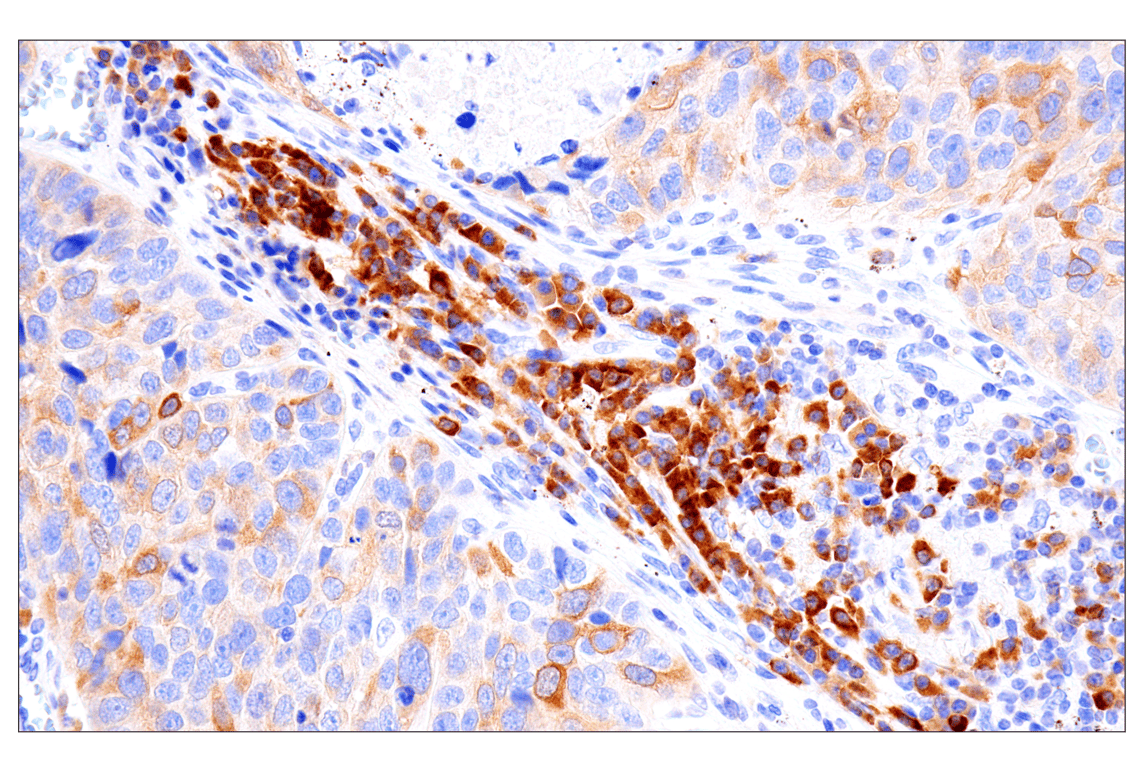
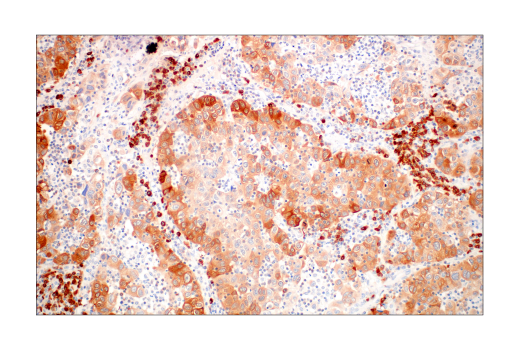
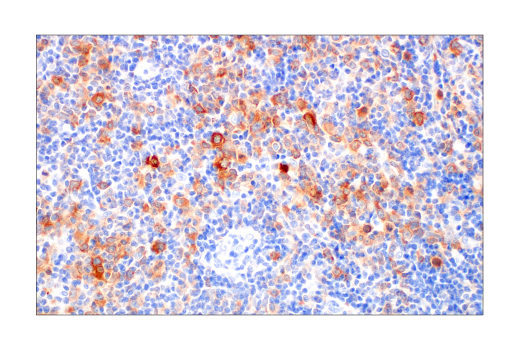
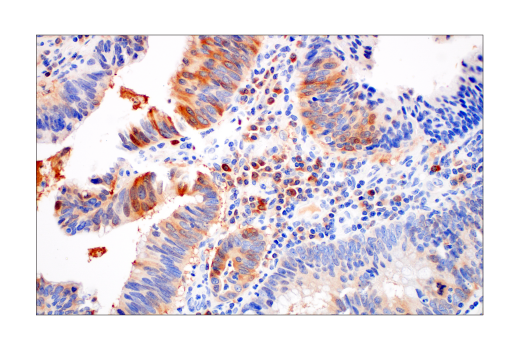
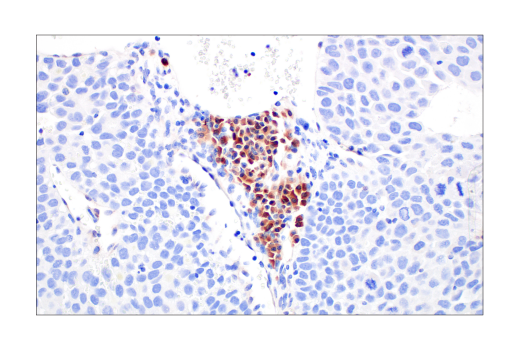
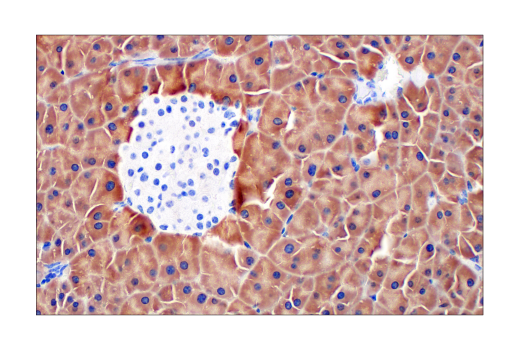

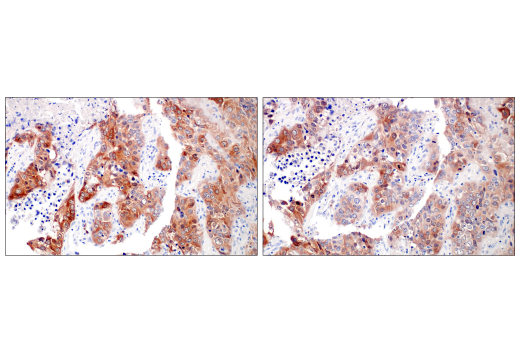
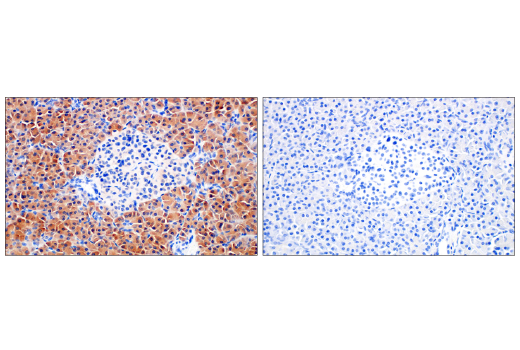
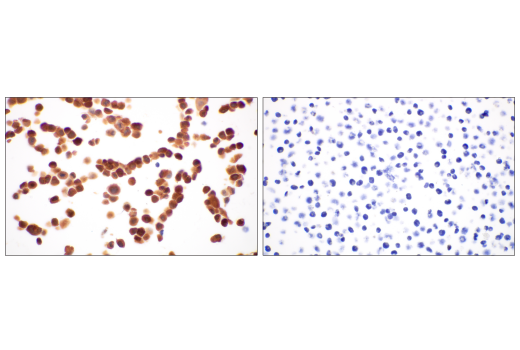



 用小程序,查商品更便捷
用小程序,查商品更便捷




